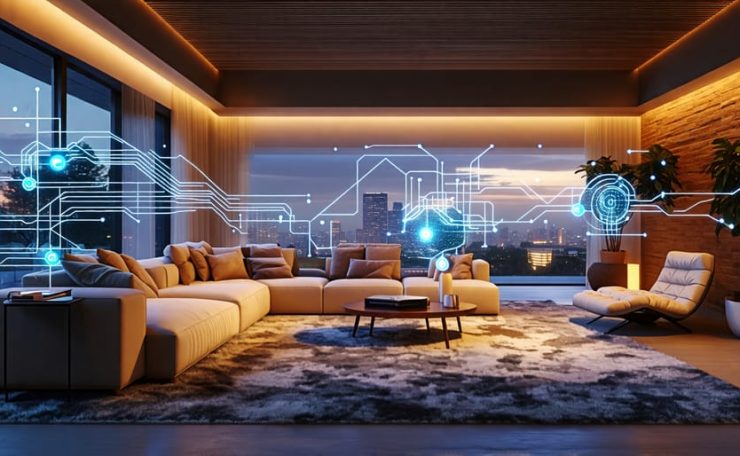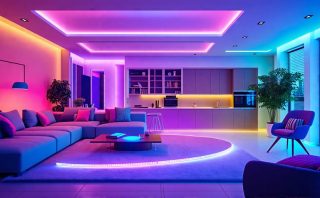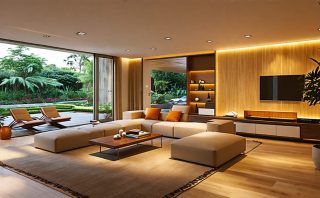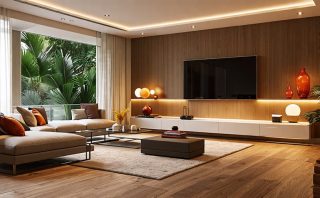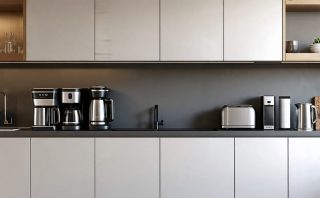The Internet of Things (IoT) is transforming the way we interact with our built environments, and IoT integration platforms are at the forefront of this revolution. These powerful tools enable seamless connectivity between diverse devices, systems, and applications, unlocking a world of possibilities for enhanced control, automation, and intelligence in interior design.
By leveraging IoT integration platforms, designers can create truly smart spaces that adapt to the needs and preferences of occupants in real-time. From personalized lighting and climate control to automated security and energy management, these platforms empower us to craft environments that are not only visually stunning but also highly functional and efficient.
As we navigate the ever-evolving landscape of interior design, IoT integration platforms emerge as essential tools for staying ahead of the curve. They allow us to push the boundaries of what’s possible, delivering cutting-edge solutions that redefine the way we live, work, and play in the spaces we inhabit.
Seamless Connectivity and Control
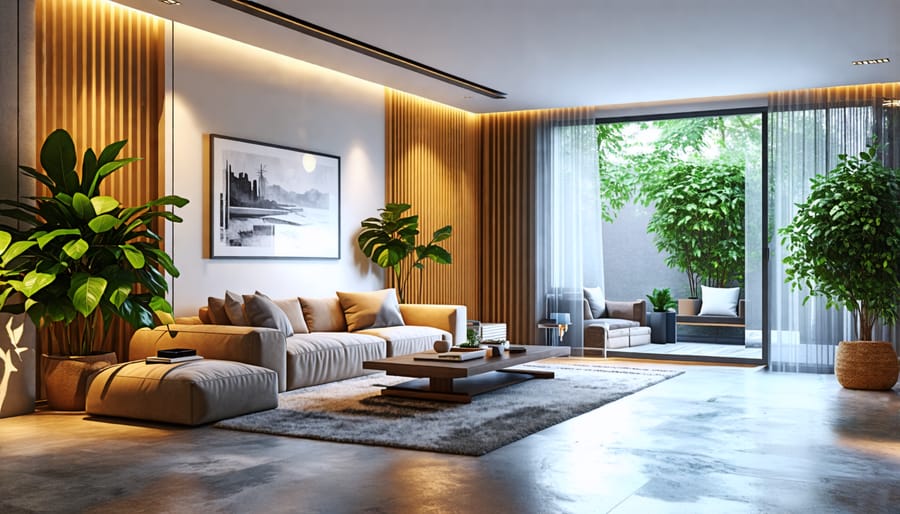
Smart Lighting Solutions
The Internet of Things (IoT) has revolutionized the way we illuminate our spaces, empowering homeowners and designers with unprecedented control and adaptability. Smart lighting solutions, powered by IoT technology, offer a new level of intelligence and responsiveness. These advanced systems can automatically adjust lighting levels based on user preferences, time of day, and even the presence of natural light in the room. IoT-enabled lighting can also learn from user behavior over time, anticipating needs and creating the perfect ambiance for any occasion. Beyond personalization, smart lighting contributes to energy efficiency by optimizing light output and reducing waste. With the ability to monitor and control lighting remotely through mobile apps or voice commands, IoT puts the power of light in the hands of the user, transforming the way we experience and interact with our illuminated environments.
Integrated Audio-Visual Experiences
The Internet of Things (IoT) has the power to transform interior spaces into immersive, synchronized audio-visual experiences. By integrating smart lighting, sound systems, and multimedia devices, IoT platforms can create captivating environments that engage the senses and evoke desired emotions. Imagine a living room where the lighting automatically adjusts to complement the mood of a movie, or a retail store where the ambiance seamlessly shifts to showcase different products. IoT integration allows for precise control over color, brightness, and sound, enabling designers to craft bespoke experiences tailored to specific purposes. From dynamic home theaters to interactive art installations, the possibilities are endless. IoT can even sync with under cabinet lighting in kitchens, creating a harmonious blend of functionality and ambiance. As IoT continues to evolve, we can expect even more innovative ways to merge light, sound, and visuals, redefining how we experience and interact with interior spaces.
Enhanced Energy Efficiency
IoT integration platforms offer a powerful solution for optimizing energy usage in interior spaces. By leveraging advanced sensors, smart devices, and data analytics, these platforms enable real-time monitoring and adjustment of energy consumption. Lighting systems, for example, can be automatically adjusted based on occupancy, natural light levels, and time of day, reducing unnecessary energy waste. Smart thermostats connected to the IoT platform can learn occupants’ preferences and adjust temperatures accordingly, balancing comfort and efficiency. Moreover, by integrating with renewable energy sources like solar panels, IoT platforms can prioritize the use of clean energy and minimize reliance on the grid. LED lighting, combined with IoT-enabled smart controls, can further enhance energy savings without compromising on illumination quality. Facility managers can access detailed energy consumption data through intuitive dashboards, identifying areas for improvement and making informed decisions to reduce costs and environmental impact. By embracing IoT integration platforms, homeowners, designers, and businesses can create smarter, greener interior spaces that prioritize energy efficiency without sacrificing functionality or aesthetics. As technology advances, the potential for IoT to revolutionize energy management in interior design will only continue to grow, paving the way for a more sustainable future.
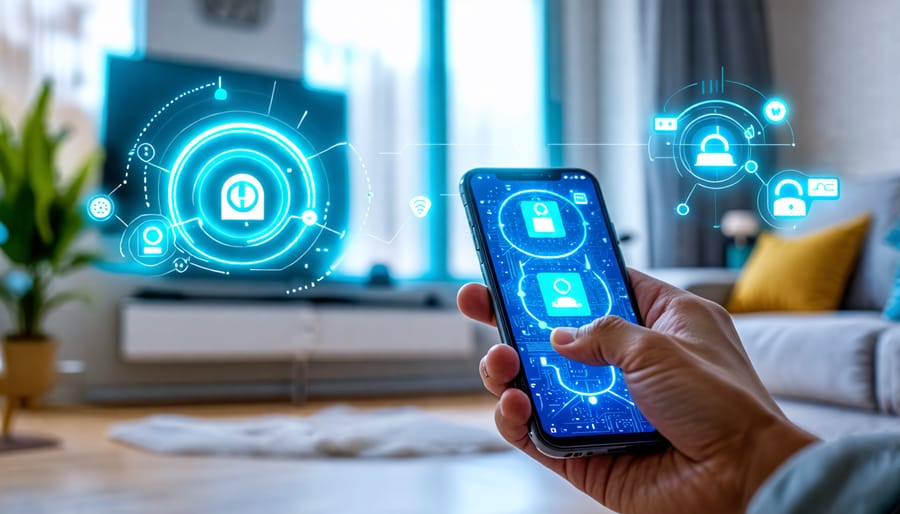
Personalized and Adaptive Environments
The integration of IoT technology in interior design allows for the creation of personalized and adaptive environments that cater to individual preferences and needs. By leveraging data from various sensors and connected devices, an IoT integration platform can enable spaces to automatically adjust lighting, temperature, acoustics, and other environmental factors based on user behavior and preferences.
For example, a room equipped with IoT sensors can detect when an occupant enters and automatically adjust the lighting to their preferred settings, whether it’s bright for productivity or dimmed for relaxation. The system can also learn from user interactions over time, refining its adjustments to create an increasingly personalized experience.
In commercial settings, such as offices or retail stores, IoT-enabled adaptive environments can optimize space utilization and enhance customer experiences. Meeting rooms can automatically configure lighting, temperature, and equipment based on the type of meeting or number of attendees. Retail displays can change lighting and content based on customer demographics or real-time foot traffic data.
Moreover, IoT integration allows for easy customization of spaces for different events or purposes. With a centralized control system, users can quickly set up and save preferences for various scenarios, such as a presentation mode or a yoga class setting. This flexibility enables interior spaces to seamlessly transition between different functions and accommodate diverse user needs.
As IoT technology continues to advance, the potential for creating truly adaptive and responsive environments grows. By harnessing the power of data and connectivity, interior designers can craft spaces that not only look beautiful but also intelligently adapt to the people who inhabit them, ultimately enhancing comfort, productivity, and well-being.
Predictive Maintenance and Longevity
IoT integration platforms allow for the installation of sensors within lighting fixtures and design elements, enabling continuous monitoring of their performance and condition. By collecting and analyzing data on factors such as energy consumption, temperature, vibration, and operational hours, these platforms can predict when maintenance or replacement is necessary before issues arise.
Predictive maintenance powered by IoT helps extend the lifespan of lighting and design components by identifying potential problems early on, allowing for timely repairs or adjustments. This proactive approach minimizes downtime, reduces maintenance costs, and ensures that interior spaces remain well-lit and visually appealing.
Moreover, IoT platforms can provide insights into usage patterns and environmental conditions, enabling designers and property owners to make data-driven decisions about component selection and placement. By choosing products best suited to specific requirements and optimizing their configuration, the longevity of lighting and design elements can be further enhanced.
Implementing predictive maintenance through IoT not only improves the reliability and performance of interior design components but also contributes to sustainability by reducing waste and extending product life cycles. As IoT technology continues to advance, its role in ensuring the long-term quality and efficiency of lighting and design will only become more significant.
Challenges and Considerations
While IoT integration platforms offer numerous benefits for interior design, there are several challenges and considerations to keep in mind. Security is a primary concern, as connected devices can be vulnerable to hacking and data breaches. Ensuring that IoT systems are properly secured and regularly updated is crucial to protect sensitive information and maintain privacy. Interoperability is another challenge, as different devices and platforms may not always communicate seamlessly with one another. Choosing an IoT integration platform that supports a wide range of devices and protocols can help mitigate this issue. Additionally, the cost of implementing and maintaining an IoT system can be substantial, requiring careful budgeting and planning. It’s essential to consider the long-term benefits and potential energy savings when evaluating the investment. Lastly, user adoption and ease of use should be taken into account, as complex or unintuitive systems may hinder the effectiveness of IoT integration in interior design. Providing clear instructions, user-friendly interfaces, and ongoing support can help ensure a smooth transition and maximize the benefits of IoT technology in lighting design and beyond.
Conclusion
IoT integration platforms are poised to revolutionize the interior design industry by offering unprecedented control, personalization, and efficiency. These platforms enable designers to create truly intelligent spaces that adapt to the needs and preferences of occupants, while also optimizing energy consumption and simplifying maintenance. By leveraging the power of connected devices and advanced analytics, IoT integration platforms empower designers to push the boundaries of creativity and functionality, delivering exceptional experiences that seamlessly blend aesthetics and technology. As the demand for smart, sustainable, and intuitive living spaces continues to grow, IoT integration platforms will undoubtedly become an indispensable tool for forward-thinking interior designers looking to stay ahead of the curve.

